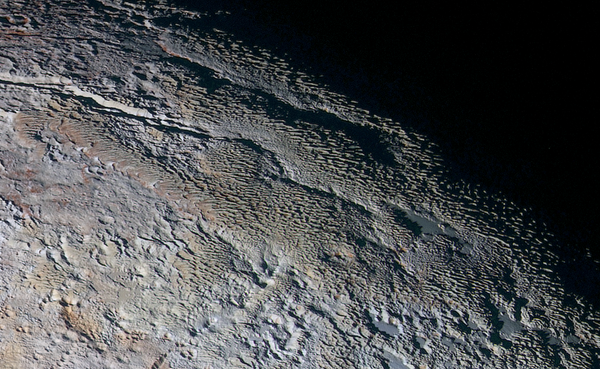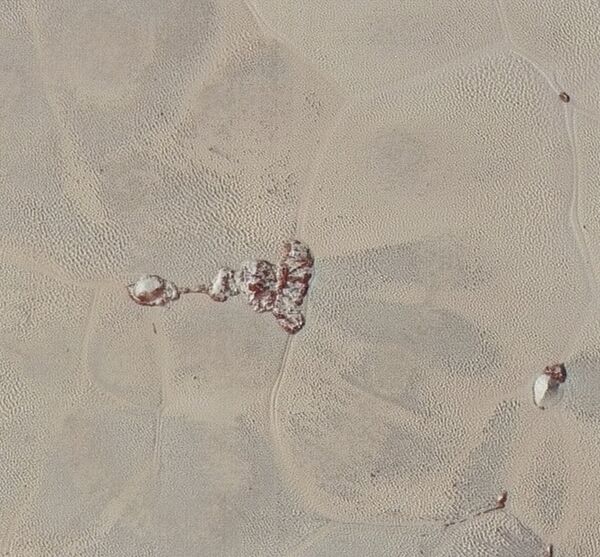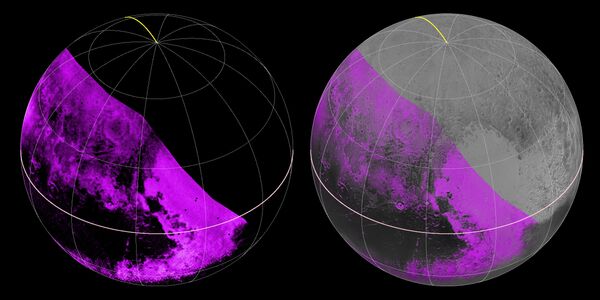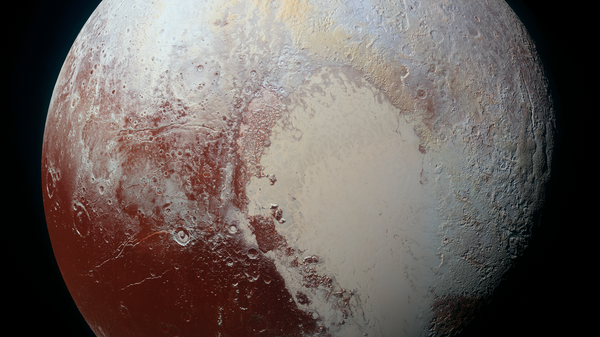While the photos were taken in July, NASA has only now downloaded and properly rendered the images, and they detail a Pluto we’ve never quite seen before.

That’s because they’re taken with New Horizons Multispectral Visual Imaging Camera. Capturing wavelengths not visible to the human eye, the MVIC can capture never-before-seen details, and it’s already expanding our knowledge of an extraterrestrial body nearly 8 billion kilometers from Earth.
"Many landforms have their own distinct colors, telling a complex geological and climatological story that scientists have only just begun to decode," NASA wrote on its website.
"The image resolves details and colors on scales as small 0.8 miles."
One strange feature which scientists can’t fully account for is a stretch of "snakeskin" mountains.

"It’s a unique and perplexing landscape stretching over hundreds of miles," project scientist William McKinnon said in a statement.
"It looks more like tree bark or dragon scales than geology. This’ll really take time to figure out; maybe it’s some combination of internal tectonic forces and ice sublimation driven by Pluto’s faint sunlight."
Another bizarre landmark is small range of mountains which have sprouted in the middle of the frozen plains of Sputnik Planum.


"It’s like the classic chicken-or-egg problem," New Horizons scientist Will Grundy said in a statement. "We’re unsure why this is so, but the cool thing is that New Horizons has the ability to make exquisite compositional maps across the surface of Pluto, and that’ll be crucial to resolving how enigmatic Pluto works."

Launched in 2006, the spacecraft traveled for 9 years before it reached Pluto, and is currently moving through the outer reaches of the solar system.


